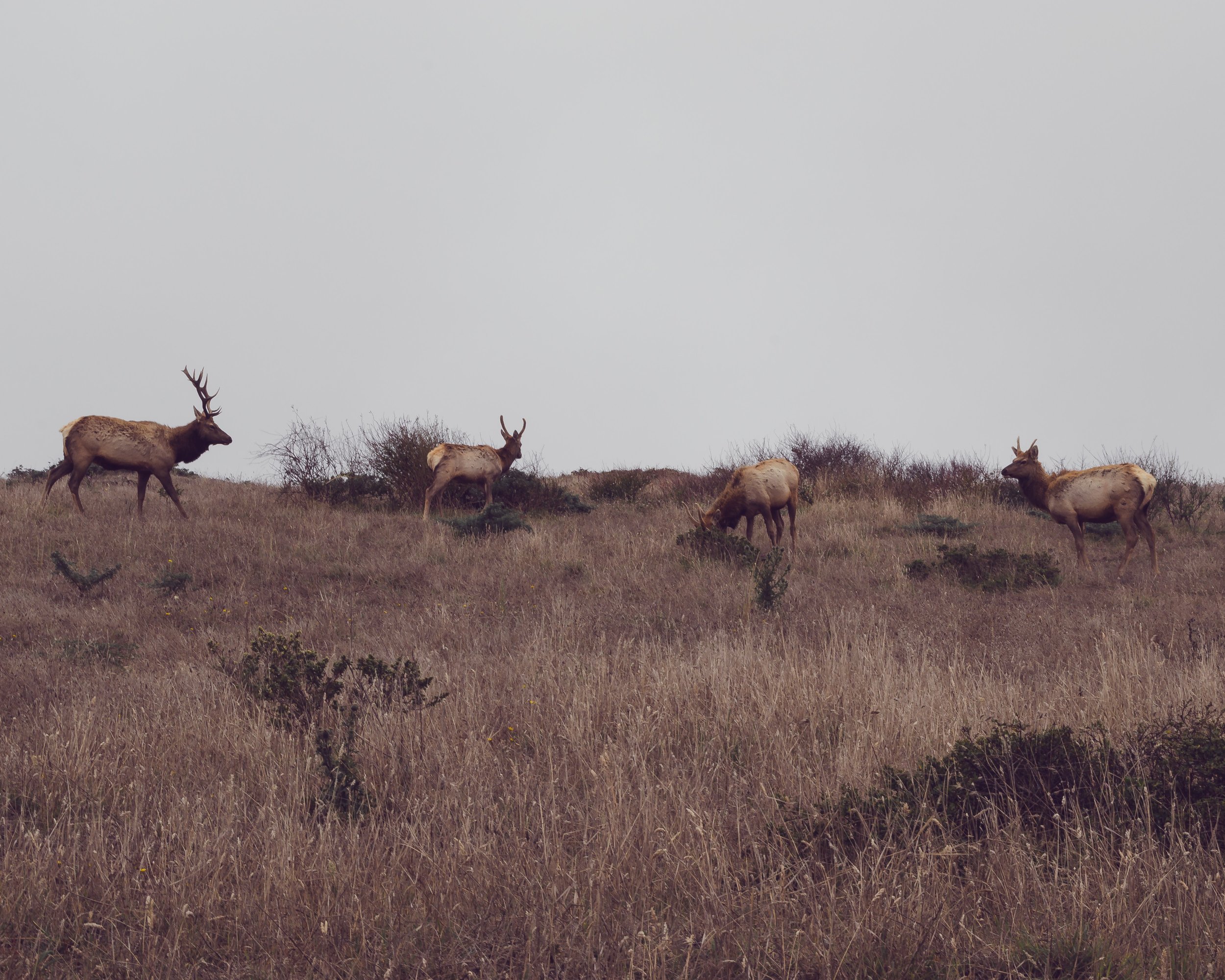
Wildlife Crossings
Safe Passage for Wildlife
Why do wildlife move?
Central Oregon’s iconic wildlife species, from elk to mule deer to mountain lions, spend much of the year traversing the region’s geography, looking for food, shelter, or possibly a mate. Some of these species, such as mule deer, embark on biannual migrations, moving between summer ranges in the high mountains and winter ranges in the lower-elevation juniper and sagebrush steppe.
Barriers to Wildlife Movement
The combined effects of development, roads, climate change, and human activity are taking a toll on both wildlife and their habitat. For example, a recent report from the Oregon Department of Fish and Wildlife reveals that reports that mule deer populations in Deschutes County declined 56% since 2004.
One of the most significant barriers to mule deer movement across the landscape are highways.
Highways present dangerous barriers that degrade and fragment wildlife habitat for a large number of vertebrate and invertebrate species, impede movement across the landscape critical to mule deer completing their migration as well as continually dispersing, and disrupt genetic connectedness of populations necessary for the long-term health and viability of ungulate herds.
The Oregon Department of Transportation (ODOT) records thousands of Wildlife Vehicle Collisions (WVCs) statewide every year (estimates are that twice as many go unreported), resulting in human and wildlife injury or loss of life and cumulative property damage in the tens of millions of dollars annually.
A new wildlife underpass along Highway 97 near Sunriver: The Bulletin
What is a wildlife crossing?
Wildlife crossings are a mitigation strategy to improve motorist safety by reducing the potential for collisions with wildlife and improve wildlife’s ability to move across landscapes. Crossings can be underpasses or overpasses.
Crossings are proven to reduce collisions significantly. For just one example, in their first two years, the Crawford Road and Lava Butte wildlife underpasses on Highway 97 in Central Oregon were used by 31 different species, and deer-vehicle collisions were reduced by over 90% within fenced areas. During the 2022 fall mule deer migration, Highway 97 wildlife crossings at MP 154 and MP 180 had a combined 88% success rate for wildlife passage.
Making Roads Safer
For people & wildlife
Photo of Highway 20 by Davgood Kirshot for Oregon Department of Transportation: View the storymap here
Safe Passage between Bend & Suttle Lake
Highway 20 is one of the primary transportation routes over the Cascades between Deschutes County and the population centers of the Willamette Valley. Oregon Department of Transportation data highlight the stretch of highway between Bend and Suttle Lake as a “hotspot,” having one of the highest densities of wildlife-vehicle collisions in the entire state. To address wildlife and motorist safety concerns, the Bend to Suttle Lake Wildlife Passage Initiative is working to identify and assess potential locations for one or more wildlife passage projects.
INCIDENT SURVEY
For Wildlife-Vehicle Collisions
Share your WILDLIFE-VEHICLE INCIDENT
Do you have photos to share?
We are looking for photos of wildlife along Highway 20. If you have any and are willing to share, please email them to lace@colw.org.
Protecting habitat
LandWatch’s Wild Lands and Water Program works to ensure Oregon’s wild lands are protected to support biological diversity and critical wildlife habitat. Together, we can ensure our region remains one where we can live as good neighbors to our wildlife by recognizing their homes on this landscape.
For more information or to get involved with this issue, please contact Jeremy Austin, WildLands and Water Program Manager, at jeremy@colw.org.



